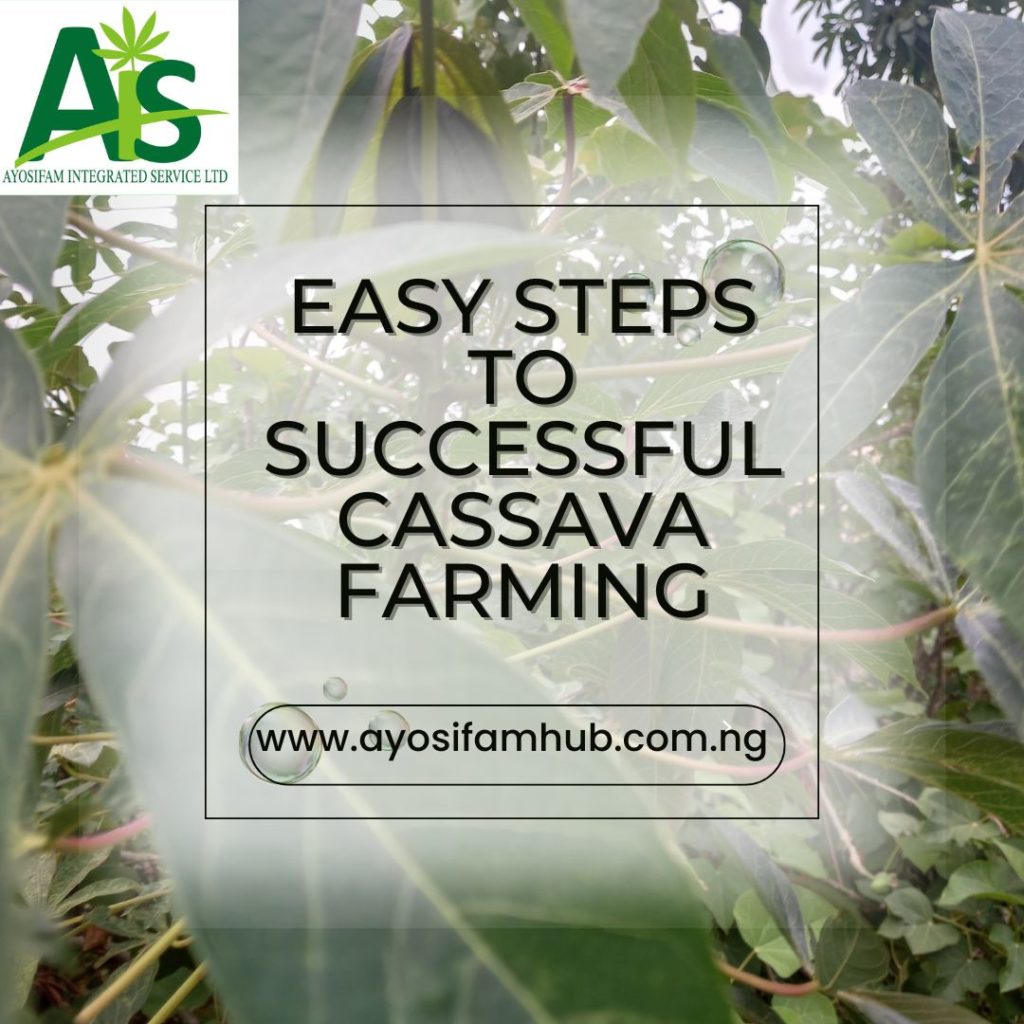Cassava farming, a vital source of food and income in many regions, doesn’t have to be complicated. By following these straightforward steps, you can cultivate a healthy and productive cassava farm with relative ease.
1.Choosing the Right Location and Soil:
Cassava thrives in warm, humid climates with plenty of sunlight. Select a field that receives at least 8 hours of direct sunlight daily. While cassava can tolerate various soil types, it flourishes in well-drained, loose, and loamy soils. Avoid areas prone to waterlogging, as this can lead to root rot. Slightly acidic to neutral soil pH (around 5.5 to 6.5) is ideal.
2.Preparing the Land:
Clear the chosen land of weeds, shrubs, and any debris. Tilling or ploughing the land helps to loosen the soil, improving aeration and root penetration. For smaller farms, manual tools like hoes and rakes are sufficient. On larger farms, tractors can significantly speed up this process. Add organic matter like compost or manure to enrich the soil and provide essential nutrients for the cassava plants.
3.Selecting Quality Planting Material:
The key to a healthy cassava farm starts with using disease-free stem cuttings. Choose mature stems, about 20-30 cm long, from healthy cassava plants that are roughly 9-18 months old. Ensure each cutting has at least 3-5 nodes (the points where leaves grow). Using healthy cuttings ensures good sprouting and reduces the risk of disease transmission.
4.Planting the Cassava Cuttings:
The best time to plant cassava is usually at the beginning of the rainy season when the soil is moist. Plant the cuttings either vertically or at a slightly slanted angle, about 5-10 cm deep into the soil. Ensure that at least two nodes are buried beneath the soil surface. Proper spacing is crucial for optimal growth; aim for about 1 meter between rows and 0.8 to 1 meter between plants within a row. This spacing allows each plant adequate sunlight and nutrients.
5.Providing Essential Care:
Weeding: Cassava is most vulnerable to weed competition in the first few months after planting. Regularly remove weeds manually or using appropriate herbicides to ensure the cassava plants have access to water and nutrients. Mulching around the base of the plants can also help suppress weed growth and retain soil moisture.
Fertilization (If Necessary): While cassava can grow in relatively poor soils, applying fertilizer can significantly boost yields, especially in nutrient-deficient soils. Conduct soil testing to determine specific nutrient needs. Generally, a balanced NPK fertilizer can be applied a few months after planting. Organic fertilizers like manure can also be beneficial.
Pest and Disease Management: Regularly inspect your cassava plants for any signs of pests or diseases. Common cassava pests include cassava mealybugs and green mites, while diseases like cassava mosaic disease and cassava brown streak disease can affect yield. Implementing integrated pest management strategies, such as using resistant varieties and promoting beneficial insects, can help minimize losses.
6.Harvesting Your Cassava:
Cassava typically matures between 8 to 12 months after planting, depending on the variety and growing conditions. Signs of maturity include yellowing of the lower leaves and a slight cracking of the soil around the base of the stems. Harvesting is usually done manually by cutting the stems close to the ground and then carefully digging out the tubers using a hoe or other suitable tool. In loose or sandy soils, the tubers can often be pulled out by hand.
Following these easy steps, you will embark on cassava farming with confidence and look forward to a bountiful harvest. Remember that consistent care and attention to your cassava farm will contribute significantly to its success.




